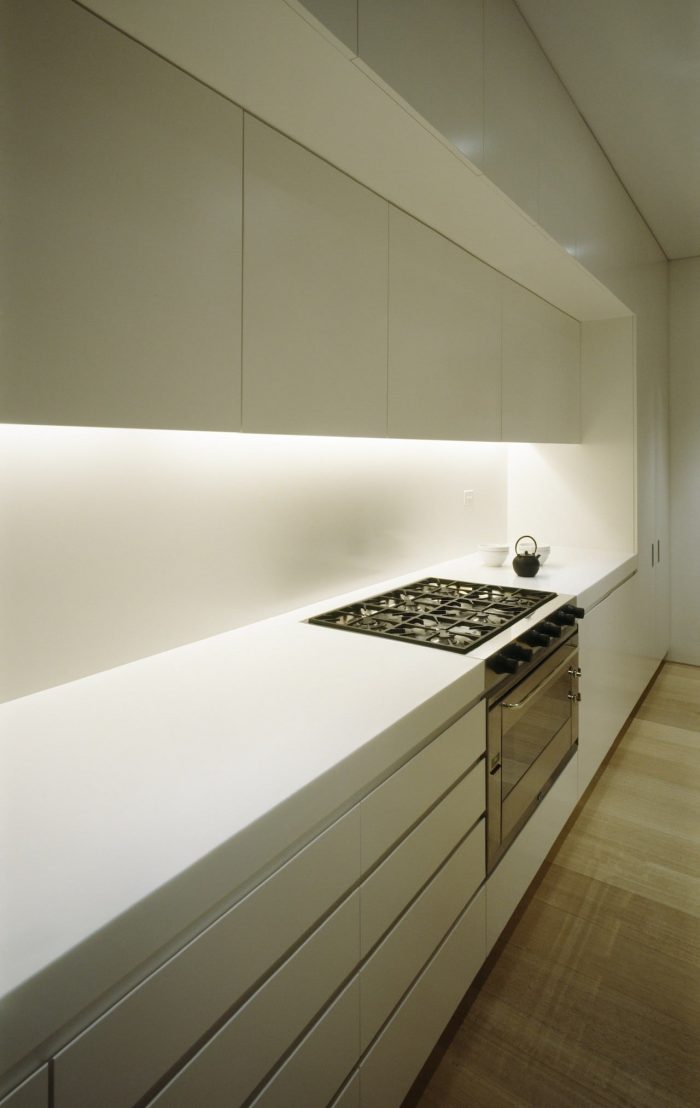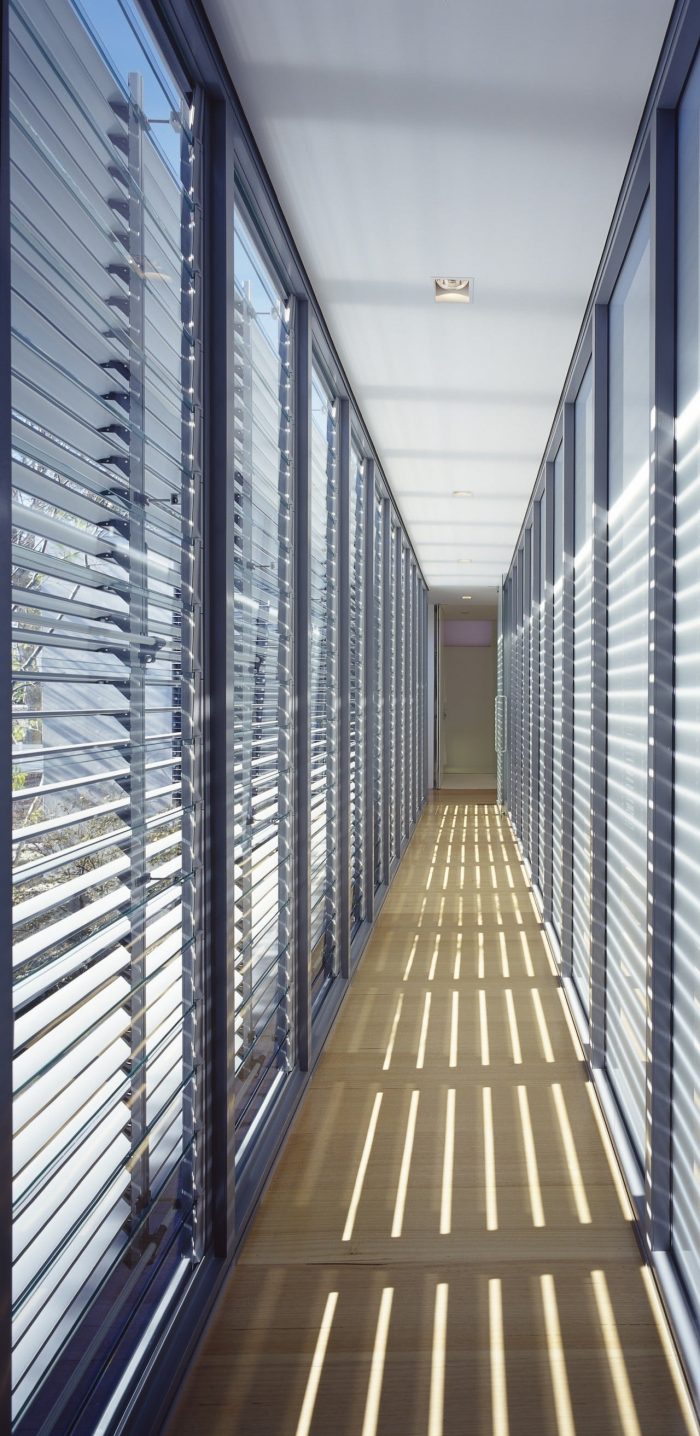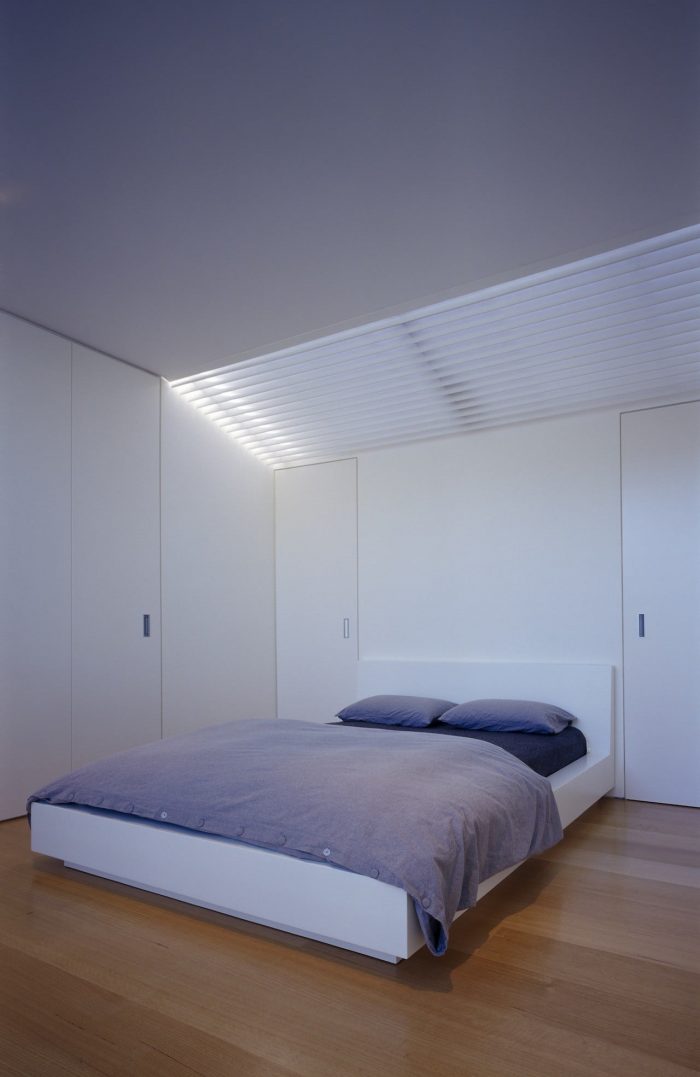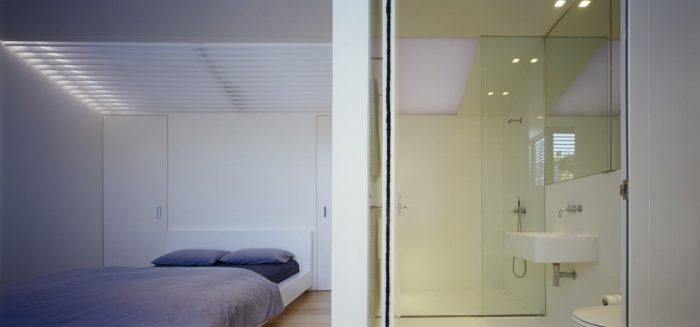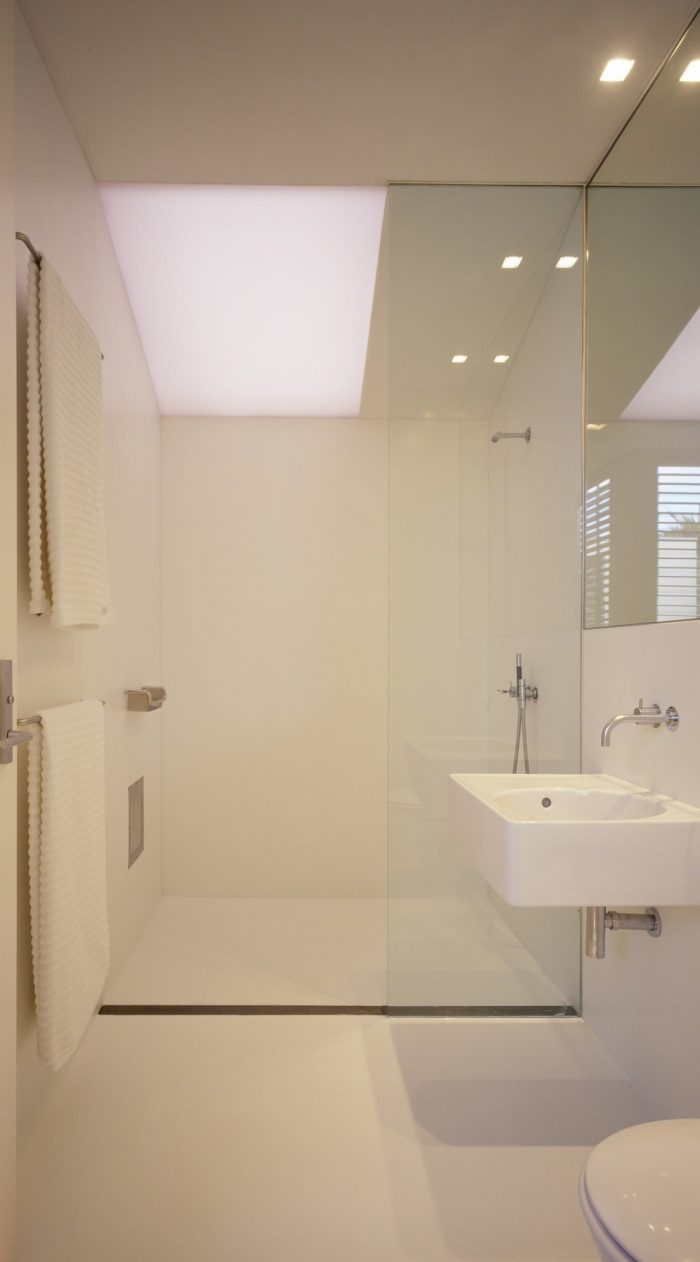这是一个19世纪40年代被列入遗产名录的砂岩别墅的翻新工程,该别墅在20世纪80年代被大量增加。房子的正面不能被改变,任何增加的部分都不能在现有的屋脊线上看到。平房的内部,包括它的砂岩墙,状况很差,所以采取了隐蔽的策略,用新的石膏板覆盖所有的墙壁和平房后墙的两个现有窗户。
This is a renovation of an 1840s heritage listed sandstone cottage which was substantially added to in the 1980s. The front of the house could not be altered and any addition was not to be visible above the existing ridge line. The interior of the cottage, including its sandstone walls, was in poor condition, so a strategy of concealment was adopted where a new plasterboard skin covers all walls and two existing windows in the back wall of the cottage.
原有的前窗被保留了下来,但用布条覆盖,以提供隐私,但又能采光。前门是室内唯一可见的原始元素。20世纪80年代的增建部分被拆除,并在现有的开口处安装了新的门窗,而车库的坡顶内的阁楼被拆除,并增加了一个完整的第二层。该项目的第一个概念性创新是在院子里建桥。主屋太小,无法满足客户对三间卧室和两间浴室的要求。桥允许主卧室和套房位于物业后部的车库上方,但仍与儿童卧室相连并在同一楼层。
The original front windows are retained but covered with fabric scrims to provide privacy but admit light. The front door is the only original element visible on the interior. The 1980s additions were gutted and new windows and doors fitted to existing openings while the loft within the gabled roof of the garage was demolished and a full second level added. The first conceptual innovation in the project was the bridge over the courtyard. The main house was simply too small to accommodate the client’s brief for three bedrooms and two bathrooms.The bridge allowed for the main bedroom and ensuite to be located above the garage at the rear of the property but still physically connected to and on the same level as the children’s bedrooms.
第二个概念是将庭院和车库(可作为孩子们的游戏空间)整合到主要的生活空间中,使室内看起来比实际要大得多,并将庭院放在房子的中心,使所有的空间都能看到它,创造一个鼓舞人心的生活环境。
The second concept was to integrate the courtyard and the garage (which can be used as a play space for the children) into the main living space so that the interior seems much larger than it actually is, and putting the courtyard at the centre of the house so that all spaces look out over it to create an inspiring living environment.
房子有一个非常清晰的平面图,下层被分成四个大致正方形的空间,客厅(原来的砂岩小屋),厨房和用餐区,院子和车库(儿童游戏空间和汽车移走后的额外娱乐空间)。上层有两间儿童卧室、浴室和公共书房,横跨院子的桥和车库上方的主卧室和套间。
The house has a very legible plan with the lower level divided into four roughly square spaces, living room (the original sandstone cottage), kitchen and dining area, courtyard and garage (children’s play space and additional entertaining space when cars are removed). The upper level has two children’s bedrooms, bathroom and communal study, the bridge spanning the courtyard and the main bedroom and ensuite above the garage.
我们与材料公司的吉姆-奥斯本合作,对前花园和庭院进行了景观设计。前面被设想为一个传统的别墅花园,有树木和灌木,以提供隐私,远离繁忙的街道和前门外的巴士站。庭院被设想为一个由现有墙壁上的树篱和藤蔓组成的芬芳花园,日本枫树提供了一个强烈的色彩元素。
We collaborated with Jim Osbourne of Material on the landscaping of the front garden and courtyard. The front was conceived as a traditional cottage garden with trees and shrubs to provide privacy from the busy street and bus stop outside the front gate. The courtyard was conceived as a fragrant garden of hedges and vines trained over the existing walls and a Japanese maple to provide one strong element of colour.
该设计包括一些简单的环境概念。通过可调节的玻璃百叶窗和大型玻璃推拉门实现自然通风。窗户和天窗的外部铝制遮阳百叶。回收的木材地板。保留现有的砂岩小屋和20世纪80年代增建的外壳。回收院子里现有的花岗岩铺面。桥为院子里的内置座椅提供遮阳。低能耗长寿命的灯具和节水的水龙头和厕所水箱。在起居室安装了一个燃烧乙醇的生态智能壁炉,以取代原来的燃木壁炉。
The design includes a number of simple environmental concepts. Natural ventilation by way of adjustable glass louvres and large sliding glass doors. External aluminium sun shading louvres to windows and skylights. Recycled timber flooring. Retention of the existing sandstone cottage and the shell of the 1980s additions. Recycling of the existing granite paving to the courtyard. The bridge providing shading to the built-in seat in the courtyard. Low energy long life light fittings and water saving tapware and toilet cisterns. An ethanol burning eco-smart fireplace has been installed in the living room to replace the original wood burning fireplace.
Architects: Ian Moore Architects
Area : 171 m²
Year : 2007
Photographs :Brett Boardman
City:SYDNEY
Country:Australia



